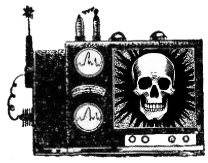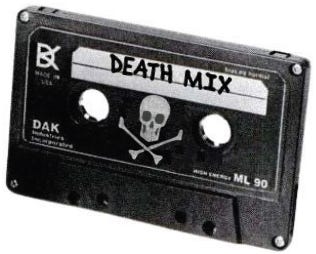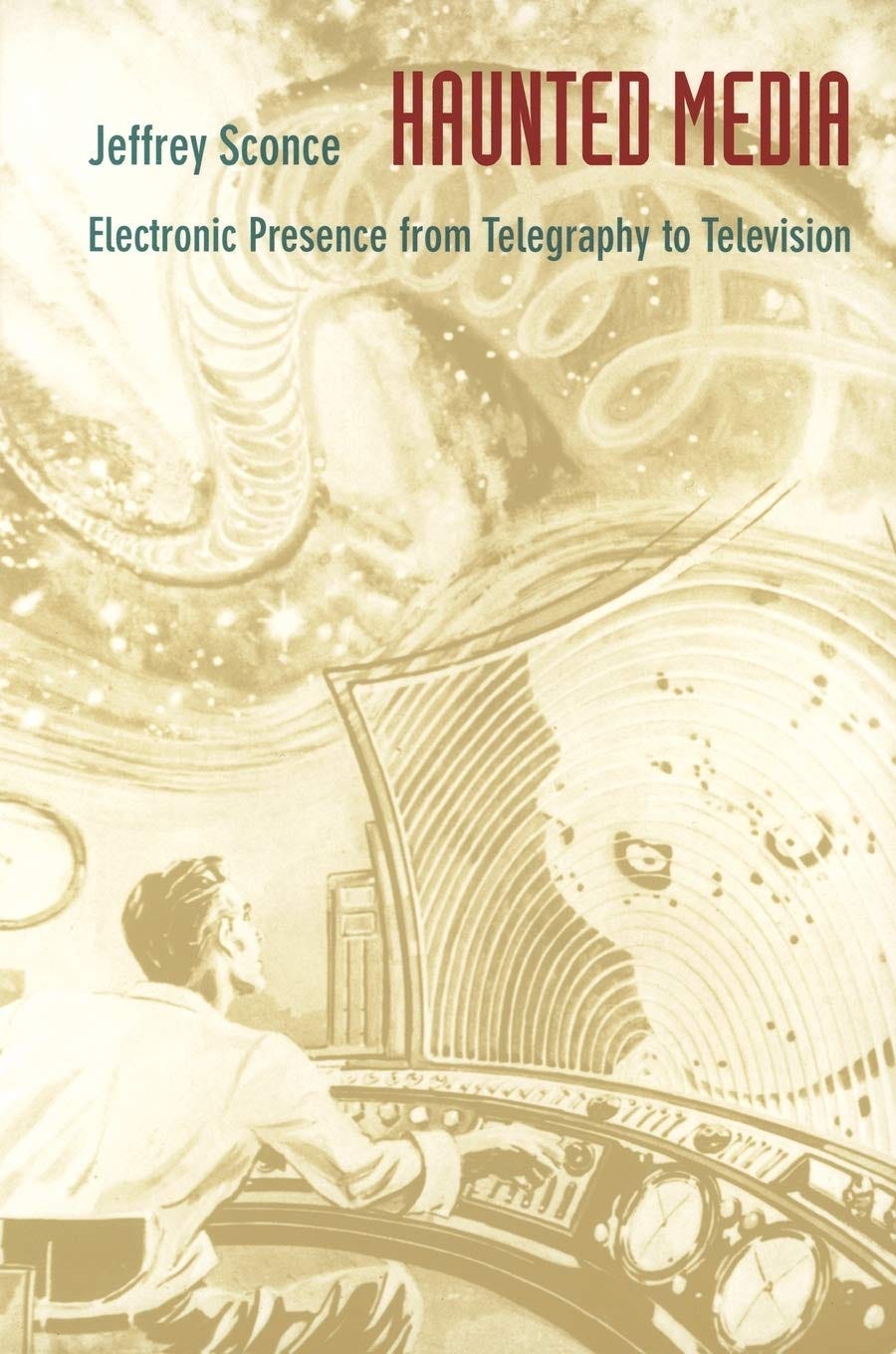In 1959, a man and his wife sojourned to their country house during the summer where they would relax and enjoy their time away. The man brought along his tape recorder—which he had used prior to record his own singing on various occasions.
During this journey, he used it to record birdsong around their country estate. When he replayed the tape later, he …
“heard a noise, vibrating like a storm, where you could only remotely hear the chirping of the birds. My first thought was that maybe some of the tubes had been damaged. In spite of this I switched on the machine again and let the tape roll. Again I heard this peculiar noise and the distant chirping. Then I heard a trumpet solo, a kind of a signal for attention. Stunned, I continued to listen when suddenly a man’s voice began to speak in Norwegian. Even though the voice was quite low I could clearly hear and understand the words. The man spoke about ‘nightly bird voices’ and I perceived a row of piping, splashing, and rattling sounds. Suddenly the choir of birds and the vibrating noise stopped. In the next moment the chirping of a chaffinch was heard and you could hear the tits singing at a distance—the machine worked perfectly!”1
Later on, the man, Friedrich Jürgenson, would find the voice of his mother using a nickname that only she used with him on another recording. It would be his discovery and its aftermath that would drive paranormal evidence into the late 20th century with the help of Latvian psychologist Konstantin Raudive, the father of electronic voice phenomena (EVP).
It is no surprise that the work of Jürgenson and Raudive was captured using a tape recorder, microphones and other technologies that have been improved upon and/or become obsolete today. Technology inherently anchors itself to a specific point in time. As humanity innovates, each new invention eventually gets left behind for an updated model or a more convenient or compact device. Once a computer filled the whole of a room within the halls of academic brownstones and now they glide effortlessly into our pants pocket. In other facets of society, technology becomes maximalist so that a whole car can be assembled by robotics which are—somewhere down the line—programmed or directed by human operators. Regardless of how the tech changes, the world inevitably becomes a salvage yard for all of the technological has-beens. Quite literally in some cases. Take for instance, the wind turbine graveyard outside of Sweetwater, TX where components of massive green energy tech lay to waste away thereby problematizing an already problematic means of attaining renewable energy.2
Yet every house in our day and age is a graveyard for outdated tech. No matter how often one attains newer versions, there will always be a “better version” awaiting. This has always been the case, yet the increments of updates have only begun to collapse upon themselves over the centuries.
This acceleration, as only one proponent of the broader climate problem, will assuredly lead to larger and larger amounts of electronic waste. Every building becomes a museum of tech. Every house becomes haunted by entities that once were and never will be again.
It is exactly this acceleration of change that leads us to marked increase in interest in the has-beens and the once were. “Outdated” tech never actually goes away. It only finds a different conduit for life: nostalgia. So much so, that as of writing this in the Year of our Lord 2024 it is increasingly common to find bands producing cassette tapes—a technology that never really was loved, just settled for in the spaces between vinyl and compact discs—of new releases for fans to purchase. Old technology lingers in our present just as our pasts never quite let us fully forge ahead into the future. Perhaps it is in this space that we find endless reports of mysterious voices and broadcasts piercing the static of these older technologies.
“Technology inherently anchors itself to a specific point in time…Every house becomes haunted by entities that once were and never will be again.”
One could make an argument that the 1840s brought about the beginning of these increasingly shorter epochs of space and time between technological innovations. As the message “What hath God wrought?” was telegraphed through Morse code from Washington D.C. to Baltimore, communication became officially disembodied.
Jeffrey Sconce states in his 2000 book Haunted Media that “the electronic circuitry of the telegraph made possible the instantaneous exchange of messages in the complete absence of physical bodies.”3 [emphasis mine] There is often a misapprehension of what is at work within the general understanding of newly conceived technology by mass populations who are confronted with it. The official report involves some version of a people clinging to the old ways and old technologies so that they see these new forms in mystical or magical ways due to their lack of scientific or rational vigor. Sconce goes on in his book to speak about the germ of the Spiritualism movement merely a couple of years after the first Morse code message was sent. He complicates this popular narrative by noting how people saw new technology within their wider socio-religious frameworks.
Lacking this modern distinction [the antithetical domains of physics and metaphysics], the Spiritualists’ initial conceptualization of “celestial telegraphy” was not so much a misapplication of technological discourse as a logical elaboration of the technology’s already “supernatural” characteristics. Talking with the dead through raps and knocks, after all, was only slightly more miraculous than talking with the living yet absent through dots and dashes; both involved subjects reconstituted through technology as an entity at once interstitial and uncanny.4
One can expand this simple observation out into the more modern versions of “celestial telegraphy”: EVP and any number of haunted or seemingly unexplainable radio broadcasts. Samuel Morse should be considered the original transgressor into the realms of the disembodied or discarnate. This disembodiment has only accelerated with the computer, the invention of the internet, and the Capitalist methodologies of Silicon Valley.
Only now the discarnate has become gamified and people become and are perceived as avatars in a global-scale online RPG. The technology we have embraced has made us all ghosts haunting our metaphysical reality.
“A bunch of disembodied voices and texts connected by an endless Russian doll of technological mediations is ontologically little different from the ‘spiritual telegraphy’ of the Fox sisters and their descendants.”
In this light, then, the voices of the dead piercing the radio static of commercial, shortwave, or digital recorders is no less real than talking to your best friend across the Atlantic through the static of excessive technological mediation. It is no coincidence that “media” and “medium” share a similar root word in that both instances involve a form of technology to distance two or more actors within an act of communication. There is a requirement of disembodiment involved in both cases yet one is considered metaphysically real—and scientifically codified—while the other is considered a scientific impossibility by skeptics. Yet the metaphysical and epistemological grounds for either form of mediation is far from certain at any specific instant. Where one cannot “see” the body of the person speaking, one cannot know with perfect confirmation that the person is alive instead of their voice being a mere hauntological presence.
Hauntology “referred to the way in which nothing enjoys a purely positive existence.” Within the milieu of late-stage technological capitalism, communication mediated through technology—perhaps most especially “out of date” technology—depletes the ontological grounding for us all. It uproots the very structures of reality. Mark Fisher goes on in relaying the meaning of Jacques Derrida’s “puncept” by noting that “[e]verything that exists is possible only on the basis of a whole series of absences, which precede and surround it, allowing it to possess such consistency and intelligibility that it does.”5
If true that our haunted technological world is dependent on non-existence and being abstracted from ourselves, our work and others, then the grounding of reality becomes nothing more than a globalized ghost story. A bunch of disembodied voices and texts connected by an endless Russian doll of technological mediations is ontologically little different from the “spiritual telegraphy” of the Fox sisters and their descendants.
When voices become abstracted from material flesh contained within the intimacy of physical space and predicated on celestial or technological mediation, it is the absences—or, rather, the crackling white noise—that deteriorates the sensorial, ontological groundings of presence and projects speech into the realm of the haunted.
We become the ghosts of our own lives.
BLAKE I. COLLIER grew up in the flat-lands of the Texas Panhandle and now resides in the green country of Oklahoma with his wife and two boys. He’s written for many other outlets and his work can be found by searching his name online. Reach him at: blakeiancollier@protonmail.com

Carl Michael von Hausswolff, “1485.0 Khz: Friedrich Jürgenson And The Voices Of The Dead,” Cabinet Magazine, 2000, https://cabinetmagazine.org/issues/1/vonhausswolff.php.
Russell Gold, “Thousands Of Old Wind Turbine Blades Pile Up In West Texas,” Texas Monthly, August 24, 2023 https://www.texasmonthly.com/news-politics/sweetwater-wind-turbine-blades-dump/.
Jeffrey Sconce, Haunted Media: Electronic Presence From Telegraphy To Television (Duke University Press, 2000), 21.
Sconce, Haunted, 28.
Mark Fisher, Ghosts Of My Life: Writings On Depression, Hauntology And Lost Futures (Zero Books, 2014), 17–18.

















Great article. As for the discussed technology and what it has accomplished in the paranormal realm, It reminded me of John Fuller's1981 book, The Ghost of 29 Megacycles. In it, a gentleman named Dr. George W. Meek developed a device called the Spiricom" that could communicate directly with the dead. Never mind the supposed capture Flying Saucers our government has, what if they have been working on a sort of "Spiricom" all this time?